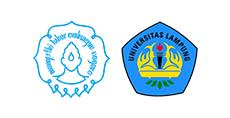Development of Android-Based Augmented Reality Learning Media Class X SMK Penda 3 Jatipuro
Abstract
Keken Kusuma Prihantoro, K3515029. DEVELOPMENT OF ANDROID-BASED AUGMENTED REALITY LEARNING MEDIA FOR CHEMISTRY CLASS X SMK PENDA 3 JATIPURO. Thesis, Surakarta: Faculty of Teacher Training and Education, Sebelas Maret University, Surakarta. July 2022.
In learning Chemistry at SMK Penda 3 Jatipuro has a limited time and only focuses on textbooks. Interactive learning media based on android technology is needed to help the learning process which can be done as an additional activity outside of class hours. Learning materials must also be projected in 3D form to facilitate students' understanding.
The purpose of this study is to develop android-based augmented reality learning media for class X chemistry subjects of SMK Penda 3 Jatipuro, and find out the feasibility of this learning media for users to use.
The research method used in this study is Reasearch and Development with 3 stages, namely the preliminary stage, the development stage, and the feasibility test stage. The preliminary stage is through interviews and literacy studies. At the development stage using the Prototype development method. The latter is the due diligence stage using the due diligence of media experts, material experts, and users.
From this research, an android-based augmented reality-based learning media software for class X chemistry subjects for SMK Penda 3 jatipuro was obtained. From this study, this learning media obtained the feasibility test results of media experts 88%, for the feasibility test of material experts 89%, and for user feasibility tests obtained results of 78%. It can be concluded that this learning media is included in the category of feasible to use based on the scale of testing used.
Full Text:
PDFReferences
Apriyani, N. (2015). Differences in the Use of 2-Dimensional Learning Media with 3 Dimensions to Student Learning Outcomes in the Beautiful Theme of Negriku Grade IV SD Kutisari III. PGSD FIP Surabaya State University, 9. [2] Arief, S., & Sadiman. (2006). Educational Media: Definition, Development and Utilization. Jakarta: PT Raja Grafindo Persada. [3] Azuma, R. T. (1997). A Survey of Augmented Reality, Prescene : Teleoperators and Virtual Environments. [4] Blackman, S. (2011). Begining 3D Game Development with Unity. New York: Apress. [5] Cahyana, U., Suhartono, & Nurhalimah, S. R. (2017). Development of Android-Based Mobile Learning Media on The Colligative Nature of Solutions. Journal of Chemistry Education Research, Vol. 7, No. 2, Pp. 162 - 164. [6] Darmawan, D. (2012). Information and Communication Technology Education. Bandung: PT Remaja Rosdakarya. [7] Fernando, M. (2013). Build Augmented Reality Applications Using Vuforia SDK and Unity. Thesis. Informatics Engineering Study Program: Klabat Manado University. [8] Flavell, L. (2010). Begining Blender: Open Sourve 3D Modeling, Animation, And Game. Apress . Paul,Manning. [9] Fonseca, D. (2014). User Experience and Access using Augmented and Multimedia Technology. [10] Gagne, R. M., & Reiser. (1983). Selecting Media for Instruction. New Jersey: Educational Technology Publication. [11] Goldstone, W. (2011). Unity 3.x Game Development Essentials. New York: Packt Publishing. [12] Handayani, F., Yulianti, N., & Erita, Y. (2022). Design of Social Studies and Civics Learning Based on Information Technology at the Elementary School Level. BASICEDU JOURNAL, Vol 1 No 6. [13] Huda, A. A. (2013). 24 Android Programming Smart Watches. Yogyakarta: ANDI. [14] Kemp, J. E., & Dayton, D. K. (1985). Planing and Producting Instructional Media (Fifth Editional). New York: Harper & Row Publisher. [15] Latuheru, J. D. (1988). Learning Media in the Learning Process of Today. Jakarta: P2LPTK. [16] Lia, K. (2015). The development of augmented reality technology as an interactive learning medium in basic chemistry courses. Volume 2 No 1. [17] McLeod, & Raymond. (2011). Management Information Systems. Jakarta: Salemba Empat. [18] Muhson, A. (2010). Development of Learning Media Based on Information and Communication Technology. Journal of Accounting Education Infonesia, 1-10. [19] Mulyani, S., & Johar, P. (2001). Teaching and Learning Strategies. Bandung: CV Maulana. [20] Mustaqim, I. (2016). Utilization of Augmented Reality as a Learning Media. Journal of Educators, Technology, and Vocational, Vol 13, no 2, P.174. [21] Nurbani, & Puspitasari, H. (2022). Needs Analysis of Android-Based Learning Media Development Mathematics lessons in high school. Educative: Journal of Educational Sciences, Vol 4 No 2. [22] Nurita, T. (2018). Development of Learning Media to Improve Student Learning Outcomes. Misykat Journal, Vol.3 No.1. [23] Nurseto, T. (2011). Creating Engaging Learning Media. Journal of Economics & Education, Volume 8 Number 1, 20-21. [24] Son, I. (2009). Information Technology-Based Education. Bali: Rakorda Disdikpora Bali. [25] Ratno. (2012). Game Technology (2D Game Development with Unity 3D and Orthello Framework. Yogyakarta: STMIK AMIKOM. [26] Riduwan. (2013). Measurement of Research Variables. London: Alfabeta. [27] Satyaputra, A., & Aritonang, E. M. (2014). Begining Android Programming with ADT Bundle. Jakarta: PT. Elex Media Komputindo. [28] Saviraningsih, Y. (2022). Development of Android-Based Basic Electrical and Electronics Learning Media In the Mechatronics Engineering Expertise Program at SMK Negeri 1 Cilegon City. JTEV (Journal of Electrical and Vocational Engineering), 301. [29] Schramm, W. (1982). Draf Sampler of Distance Education. Hawai: West Communication Institute. [30] Valino, J. R. (1998). Interactive Augmented Reality. Rochester, 6-8. [31] Wahyuni, D. Q., & Ananda, R. (2022). Development of Android-Based Interactive Mathematics Learning Media on Algebraic Form Material. Journal of Scholars: Journal of Mathematics Education, Volume 06, No.1, P-870. [32] woodill, G. (2010). The Mobile Learning edge: Tools and technologies for developing your teams. New York: McGraw-Hill Professional.
Refbacks
- There are currently no refbacks.






